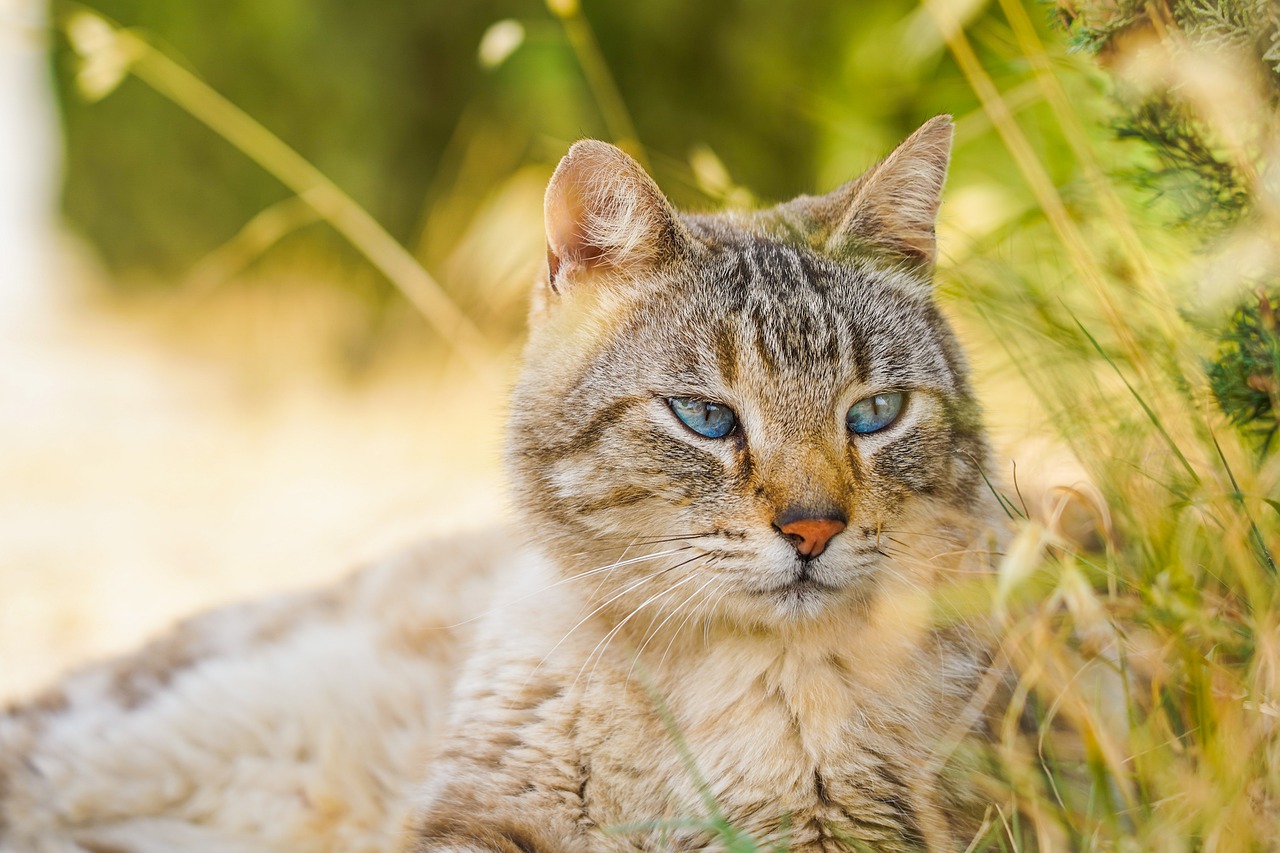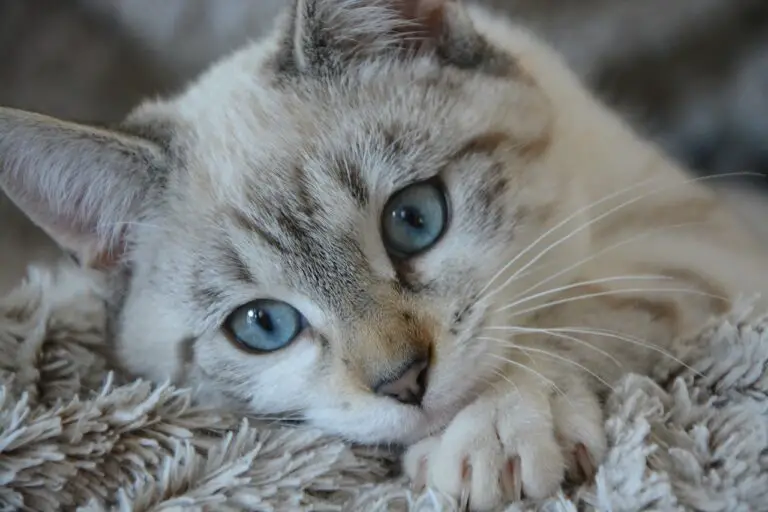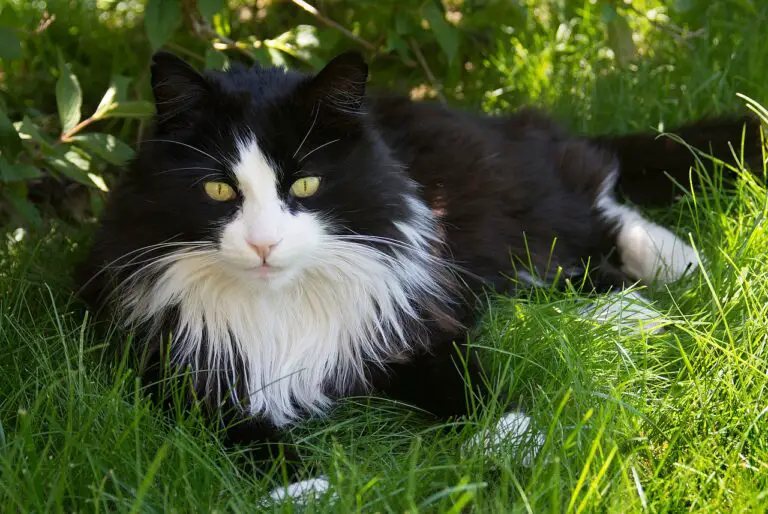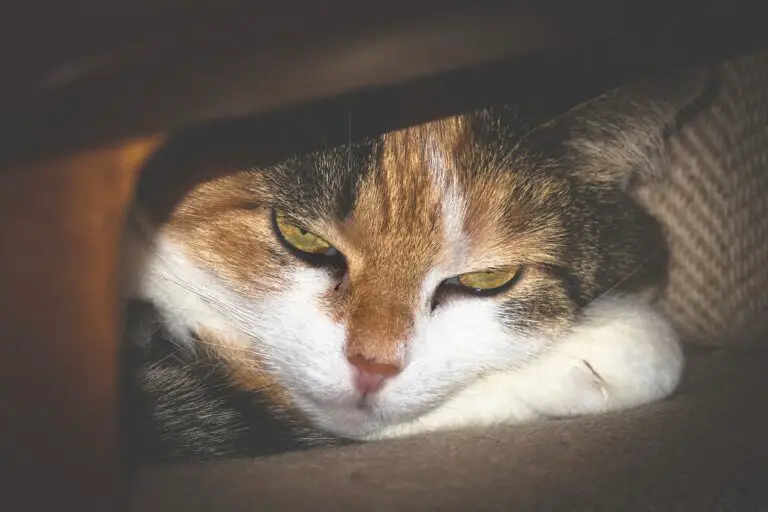WHEN DO INDOOR CATS SHED THE MOST?
When do indoor cats shed the most? You may have the impression that your cat is shedding all-time times when in reality, cats shed a lot only one or two times a year. Indoor cats may shed a tiny amount of hairs routinely, but that should be all.
Indoor cats shed the most in spring and fall when there is enough light to signal their bodies that it is time to get rid of excessive fur. Indoor cats shed less hair than outside cats due to the artificial light in our houses, but it also depends on maintaining a constant temperature in your home.
Let’s see how and when indoor cats shed and what can be done to help them stay healthy.
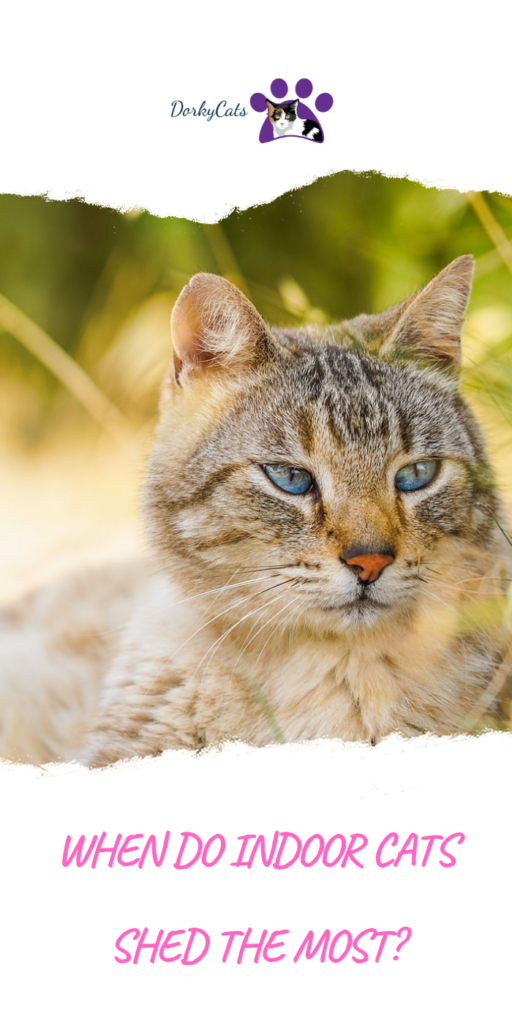
WHY DOES MY CAT SHED?
During winter, cats grow their fur because they need to protect themselves from colder temperatures. However, when fall and summer come, the days become longer, and there is a lot more sunlight. The sunlight signals a cat’s body to get rid of the excessive fur.
They do not need too much fur in summer, and it is a perfect time to change coats and prepare again for another winter with newer and robust fur. If your cat is doing well in normal conditions, you will see only an average quantity of hair loss by your cat all year long.
But, only one or two times a year, you will observe a lot of hairs lost by your cat. However, cats’ systems have grown confused since humans domesticated them and subjected them to things like artificial air conditioning and heat. So now indoor cats continually shed.
Cats shed to get rid of any dead hair accumulated on their bodies. Since dead hair might irritate your cat’s skin, it should be removed. If you do not brush and remove your cat’s dead hair, they will do it on their own through shedding.
WHEN DO INDOOR CATS SHED THE MOST?
Shedding can occur for various reasons, but it is governed mainly by how often your indoor cat spends basking in the sun. If you personally feel like your indoor cat is not shedding enough or too much, a trip to the vet wouldn’t harm your pet for the peace of mind that nothing more serious is going on.
Indoor cats are known to shed more as their bodies prepare for seasonal temperature shifts. This usually happens in the fall and spring. On the other hand, indoor cats are regularly subjected to temperatures comparable to those experienced by humans.
As a result, their bodies have been used to shedding all year. Therefore, expect shedding to increase as the season advances. If you see your cat shedding excessively during other seasons, this may signify that your cat could have a more serious issue going on, like an allergy.
HOW DO YOU CONTROL AN INDOOR CAT’S SHEDDING?
Brushing your cat can help reduce shedding Indoors. Brushing and combing daily removes loose and dead hair and aids in the condition of a cat’s skin and coat. Cats with healthy fur coats shed a little less.
Begin brushing your cat gradually, keep sessions brief and cheerful, and always stop before your cat resists. Using food rewards can assist in making the experience more pleasant and teach your cat to like it.
As your cat grows accustomed to the sessions, you can lengthen them. In addition, brushing helps eliminate dead hair, making the cat less prone to shed in your house. Here are some good brushes that you can use with your cat:










WHY IS MY CAT SHEDDING SO MUCH ALL OF A SUDDEN?
You may have a situation where your cat is shedding outside of the usual times of the year. You may realize that he is losing a lot of hair. Besides the normal shedding, a cat losing too much of its fur cat be a sign of illness.
Your cat may shed all of a sudden for the following reasons:
- Parasites
- Poor nutrition
- Stress & anxiety
- Allergies
- Atopic dermatitis
- Scabies
- Pregnancy
- Age
- The season
If your cat has tick or insect infestation, he will try to scratch and bite his fur off, and as a consequence, he will lose a lot of hair. Similarly, if you feed your cat poor-quality food, he may not have enough nutrients to keep a shiny and healthy coat. Your cat needs a diet with enough ammino-acid and good nutrients.
If there are no parasites and your cat’s diet is good, the problem could be an allergy to food or other things. Cats can also suffer from atopic dermatitis as a reaction to something in the environment, such as an insect or fungal infection.
If your cat has scabies (caused by a mite), you can see the same results in terms of lost fur. Finally, stress can be another reason for your cat excessively licking and biting its hair. If you have a female cat and she is pregnant, the surge of hormones can cause excessive shedding, and so if your cat is old.
PROVIDING A HEALTHY DIET FOR YOUR CAT CAN HELP YOU MANAGE SHEDDING
Provide high-quality food and lots of fresh water for your indoor cat. A balanced diet will keep your cat healthy, resulting in reduced shedding. Look for wet cat food with particular meats as the first two or three components, such as chicken, beef, or fish.
These are essential to a healthy cat’s diet since cats require animal-based protein. Grain or other carbohydrates like wheat, corn, and soy are commonly used in dry cat meals and low-quality wet feeds. These components do not provide as much nutrition to cats as meat-based proteins do.
They may also trigger allergic or digestive reactions, resulting in dry skin and shedding.
IS THERE A DIFFERENCE BETWEEN A CAT WINTER COAT VS SUMMER COAT?
Cats develop a winter coat, which is much thicker and longer than their summer coat. You may see the difference if you have a long-haired cat since the fur can also become longer than usual during winter. The best way to know the difference is to take a photo of your cat in summer and one in winter.
In my experience, my black cat, who is long-haired with a very puffy tail, started to develop a sort of mane around his head and his fur grew considerably during the last winter. The winter coat is a necessary and natural event that allows a cat to stay warm during cold weather.
The cat breed can make a difference in the type of winter coat developed, but if they are not hairless cats, typically, there is always a winter coat developed, and often even an undercoat. Indoor cats could develop a lighter winter coat, although they still develop one.
WHAT ARE THE BEST CAT SHEDDING SOLUTION?
If you are experiencing shedding problems because it is that season of the year or because of any other reason, here there are some things you can do to reduce the problem:
1.REGULAR BRUSHING
You could consider brushing your cat every day during shedding times, while during the rest of the year, one time could be enough. With a brush, you can remove loose hair, but also you can remove dirt, dander and you can prevent the fur from becoming tangled and matted.
2. A LOT OF WATER & GOOD FOOD
Hydration can help your cat to keep his coat in good condition. However, cats are not known for being heavy drinkers, so you may have to encourage them by providing water fountains or other ways to attract them to the water bowl.
Check with your pet store for food that can help strengthen your cat’s fur and get rid of cheap lousy cat food. Here are some ideas of quality food you can use specifically to support a healthy coat:










3.GIVE YOUR CAT A BATH
Cats do not like bath, but if you are brave and if your cat is not that difficult, you could take the chance and wash your cat. A bath can help clean your cat’s fur profoundly and make your cat feel better. Of course, it is not always the best solution, but it is a way to reduce shedding.
4. SHAVING
It is an extreme solution, but if your cat is shedding a lot and has a medical condition to resolve, shaving can be the final solution. Unfortunately, it can be pretty brutal for a cat, so it has to be done only if really necessary.
Shaving can be tough to do with a cat, so you could think about hiring a professional, or if you feel confident, you could do it yourself.
5. KEEP YOUR CAT SAFE AND STRESS-FREE
Stress is a contributing factor to shedding. Your cat should stay in a calm and loving environment. It can help to prevent him from losing more hair. If you are in that period of the year when cat shed, avoid changing furniture, introducing new pets, and other stressing factors.
FREQUENTLY ASKED QUESTIONS
When do cats stop shedding?
Cats do not stop shedding. It is a continuous thing. However, they shed the most in fall and spring. During the rest of the year, you can see your cat shedding mildly. But you can’t say they stop the shedding completely.
Do cats lose fur as they age?
Cats can lose more fur when they age because they can develop problems getting good nutrients from their food and may experience difficulties in their personal grooming.
Does brushing cat reduce shedding?
Brushing can reduce shedding because you are removing the dead fur yourself. If you brush your cat daily, especially during the shedding season, you can reduce the amount of hair lying around in the house.

